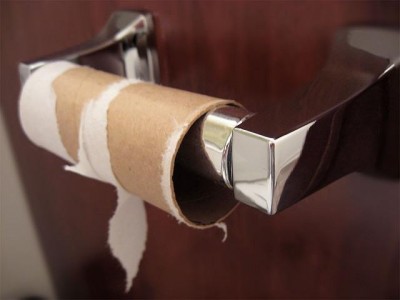Currently, the hashtag #WhyYouNeedTherapyInOneWord is trending on Twitter. From forums where people congregate to share strategies for combatting mental illness to essays that give a glimpse into the experience of those who have mental illness, I believe there is a strong capacity for internet communication to reduce stigma and help those in need. There is also a capacity to increase stigma, or trivialize these experiences. And sometimes a single online event can do both.
Therapy isn’t just for folks with a diagnosed mental illness. I’m a firm believer in therapy for everyone (who wants it), and I think it is invaluable to have a person in your life to whom you can tell anything without fear that they’ll spill the beans. Whether it’s your most deep-seated fears and regrets or trivial complaints about the rude co-worker in the cubicle next door, having a judgment-free zone—if you’re lucky enough to build that much trust with a therapist—can make the day-to-day burdens we carry feel infinitely lighter. Of course, not everyone has a positive experience with therapy, and getting a bad therapist can be traumatizing. But when you click—when it really works—it can change everything.
So yes, we should talk more about why we need therapy. Even when it seems relatively trivial. I have a stressful job, or my dog needs to be put down, or I’m going through a rough breakup—it’s not just severe mental illness that can be addressed through therapy, but a whole host of human experiences that make it a bit harder to get through the day.
So what happens when the Twitter zeitgeist tries to sum up their need for therapy in one word? Here are some of the answers:
Marriage
Life
Clintons
Jaws (with an image of a scene from Jaws)
Kids
Work
Squirrels
Abuse
Clowns
Traffic
Overthinking
Furbies
Rule Breaking
Depression
People
Deployment
Life
Answers ranged from electoral politics to childhood traumas to diagnosed illnesses to goofy non sequiturs. Many of them are everyday experiences that are relatable, and can certainly contribute to poor mental health, but are quite obviously not reason enough in and of themselves to constitute a trip to the therapist. It would be difficult to fill a 45 minute session expressing your feelings about traffic or Twitter.
But even this statement should be treated with skepticism. What if you have experienced trauma from a serious car accident in which you lost a loved one? Or you’re experiencing severe and unending harassment on Twitter?
You might see where I’m going with this. Our need for mental health care can’t be summed up in one word, and even one-word responses that seem trivial reveal the truth about how stressful, unpredictable, and often unfulfilling modern life can be. For those suffering from illness or trauma that inhibits basic functioning, it may be either comforting or disturbing to see the range of responses that people contribute to this hashtag. For others, it may open their minds to the benefits of therapy for everyday struggles. Or, it may perpetuate stigma around mental illness as something people should just “get over,” something no more serious than a Friday morning traffic jam or an aggressive office squirrel.
What you take away from #WhyYouNeedTherapyInOneWord likely has more to do with your already-existing feelings about therapy and mental illness than the specific content of the hashtag. I can imagine myself reading through it a few years ago, when I was suffering greatly from my then untreated mental illness, and feeling deeply hurt that people seemed to be trivializing the issue. I can also imagine myself at other times finding solidarity with and admiration for people speaking openly about their struggle.
Today, I found it heartening to simply see people talking about therapy at all, and the light-heartedness of much of the tag reminds me that sometimes we can laugh at ourselves and the mundanity of daily life, with its myriad effects on wellness. I have certainly spent a couple of sessions with my therapist talking about the stress that Twitter introduces into my life. I recall a time when I finished a rant about an experience with a store clerk and said “Wow, that’s pretty silly, right?” Her response: “It’s your life. It’s not silly. When it comes down to it, most of our lives are a collection of small things. It’s still big.”
So the reasons we may need therapy cannot be summed up in one word. Or, maybe they can. It’s a word that shows up over and over on #WhyYouNeedTherapyInOneWord: Life. It’s the one thing that we all have in common, the one word general enough to sum up the millions of reasons that a person may have to reckon with their own mental wellness. For those lucky enough to have access to affordable mental health care, it can be life-changing. For those suffering alone, it can be an unattainable dream. Maybe our next hashtag can directly advocate for better, more affordable health care that we can all access. After all, life doesn’t seem to be going anywhere any time soon.
Britney is on Twitter.


















